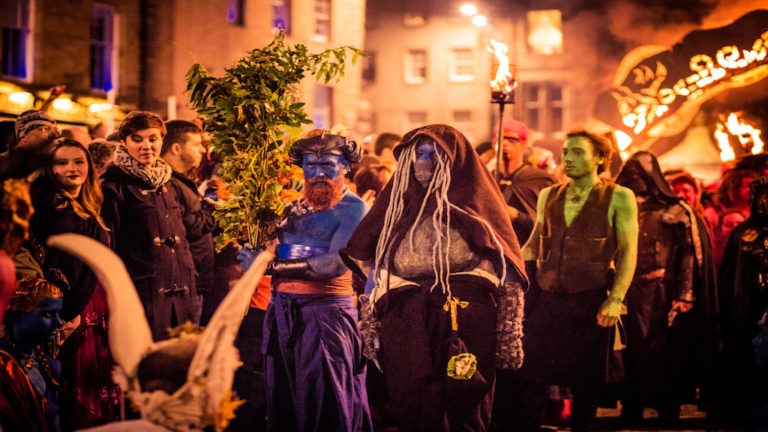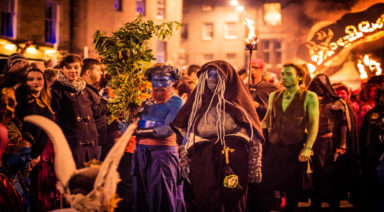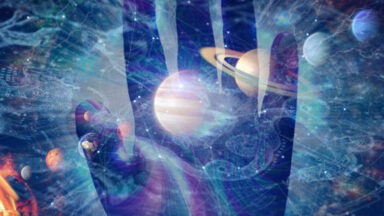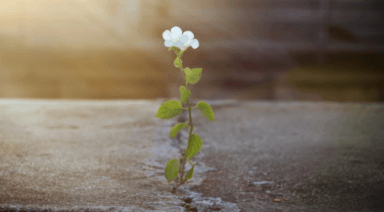Goddess Mythology Throughout the Ages

Mythological gods and goddesses have long symbolized the eternal heaven within human beings. This is how cultures connect to and move through life in a way that enables them to make sense of their surroundings and circumstances and move beyond what often is a hard physical reality.
Cultures throughout time have embraced and worshipped the image of a mother goddess for a variety of reasons. Mainly, she is looked to as a symbol for abundance, fertility, kindness, family, marriage, good harvests, and good fortune. Traits ascribed to these lovely beings, such as femininity and womanhood, have also represented hearth, home, family, fertility, compassion, strength, and loving-kindness throughout the centuries. Others, like the Norse giantess Hel and the Egyptian goddess Isis, represent the darker sides of life — the underworld, death, magic healing, and guiding the fates of men.
History of Goddess Worship
Goddess or woman worship began around the Paleolithic period (2.5 million years ago to 10,000 BCE), which is humanity’s longest recorded time on Earth. Archaeological digs unearthed artifacts dating back to this time period, the most frequent of which is Venus, believed to have been carved between 24,000 to 22,000 BCE.
The next period to follow was the Neolithic, in which more carved goddess figurines were unearthed and appear to date back 10,000 years. This era was when farming became standard practice, and figurines from this time period most likely represented fertility and offerings to ensure ample harvest.
The Egyptians were also at the forefront of goddess culture, beginning with their Nagada culture. Quite a few murals depict a goddess figure standing between two lionesses. Lionesses were a symbol of good motherhood. Earth, moon, sky, and primordial waters were also associated with the feminine and the care-giving powers therein. Egyptians worshipped many gods and goddesses, but the most prominent of the female figures in Egyptian mythology was Isis and Hathor. These traditions were then passed to other cultures.
Other archaeological digs scattered around the world also revealed the number of goddess figurines far outnumbering those of male gods, leading us to believe many early societies were mainly matriarchal.
Female mythological figures and symbolism are prominent in many cultures, and each deity may bear resemblance to the others, despite cultural differences. Here we’ll examine three goddesses and discuss the traits of each one.
Gaea (or Gaia)
Perhaps one of the most well-known goddess figures comes unsurprisingly from ancient Greek Goddess mythology. Gaea was referred to as the Greek “Mother Goddess,” whose physical representation embodied Earth and Life at their most fundamental: the elements. From here, the sky, the stars, and the Earth with all its rivers, mountains, and plains sprang to life, supported by her wisdom and grace. Born at the dawn of creation, she sprang fully formed from the void and was considered the great mother of all, including the Titans in her union with the God Uranus. It is also believed she gave birth to the sea gods and giants, and many other earthly creatures sprang forth from her.
Seen as the all-nourishing mother, Gaea was also credited as being the source from which divine inspiration arose, as well as an oracular divinity. Her following grew over time until she was honored universally in her many splendid temples around ancient Greece as a prophetess. Due to the motherlike nature of her representation, she presided over marriages, oaths, and the hearth or home. Her symbols — fruit and grain — perfectly embody her symbol of plenty, abundance, and caregiving.
Isis
Originally less of a well-known goddess, Isis’s link to the kingships in Egyptian culture slowly brought her to the forefront of Egyptian Goddess mythology, and she became one of the most widely worshipped deities, even still today. She embodied many life aspects simultaneously. In connection with the death, she was the principal deity associated with funeral rites. As a healer with magical abilities, she cured the sick and injured and brought the dead back to life. Like Gaea, Isis also symbolized motherhood and was considered a role model for all Egyptian women.
Unlike Gaea, Isis had parents. Allegedly the daughter of the earth god Geb and the sky goddess Nut, she married her brother Osiris, the king of Egypt. A supportive and loving wife, she was also attributed with teaching her female subjects the art of homemaking, including weaving, baking, and brewing beer.
Osiris was eventually murdered and hacked to pieces by a jealous sibling, Seth, and Isis mummified her former husband and restored his body to one whole again, but he was neither living or dead. Nine months later, she bore a son, Horus, and Osiris retreated to the underworld to become King of the Dead. Isis hid her son from his murderous uncle in the rushes along the Nile delta until he was fully grown and could avenge his father’s death.
A model wife and mother who used intelligence and kindness to defend the men her life when necessary, Isis’s special gift was one of the magical powers that superseded those of the other Egyptian deities, and her influence spread far enough for historians to wonder if early depictions of a maternal Isis nursing Horus influenced similar depictions of the Virgin Mary with the Christ Child.
The most common physical manifestations of Isis are as a beautiful woman in a sheath dress, with the sun or cow’s horns on her head. Occasionally, a scorpion, a cow, or a sow represented her. Initially, the healer called upon for dead or ill kings, as her popularity spread with more and more temples dedicated in her honor around the world, her healing powers soon grew to encompass and benefit all Egyptians.
Hel
Norse Goddess mythology is rife with impressive strong female deities, and none perhaps so intimidating as Hel. According to 13th-century Icelandic scholars, Hel is the daughter of the Norse god Loki and an impressive giantess named Angrboda. A giantess herself, her name means “hidden,” and scholars believe she was the original source of the phrase “go to hell.” Her family also included a wolf sister, “Fenrir,” and a serpent brother, “Jormundgand.”
Hel ruled over the identically named underworld of the dead and is often portrayed as rather cruel, harsh, and indifferent to the sufferings of both the living and the dead.
The Death of Baldur is one of the few remaining texts in which Hel is featured prominently. Baldur, a universally beloved god, was slain by Loki, Hel’s father, and Baldur was relinquished to Hel to become another member of her underworld kingdom.
In response, the other Norse gods sent a messenger to negotiate with Hel to release Baldur back to the land of the living. The messenger, Hermod, pleaded with Hel on behalf of his friend, claiming many in the known world were in tears over the loss of this figure. Hel refused to release her captive until everything in the cosmos wept over their loss, and Hermod traveled the world encouraging all beings to shed their tears in support of Baldur. Only one giant refused, who was most likely Loki in disguise. Baldur was not released from the underworld, and Hel kept him in her dark clutches forever.
Unfortunately, beyond this story and a few sparse texts, little more about Hel’s personality is known from the remaining Norse texts, but she was often described as appearing half black, half white. She struck a hard bargain and symbolizes the inevitability and indifference of death.
Connection Through Mythology
Mythology has connected human beings to each other and the deeper meanings are hidden in life since language was firstborn. When looked at from a metaphorical perspective, gods and goddesses become energies for humans to call upon and embody. As Joseph Campbell writes in his journal, “Myth makes a connection between our waking consciousness and the mystery of the universe. It gives us a map or a picture of the universe and allows us to see ourselves in relationship to nature … lastly, it also helps us pass through and deal with the various stages of life from birth to death.”
From Gaea, the “Mother of All,” to Isis, the diplomatic and deeply loving Queen, to Hel, the ruler of the underworld, goddess mythology portrays characteristics and archetypes of the ultimate woman in many bodies and remains a fascinating part of ancient and modern culture.
Samhain Unveiled: Tracing its Origins and Time-Honored Rituals

Samhain is a time-honored tradition followed by witches, Wiccans, ancient druids, and countless other modern pagans across the world, and celebrated as October turns to November. Samhain is a festival of the dead, meaning “Summer’s End,” and though you’re probably tempted to pronounce it “sam-hane,” it’s actually pronounced saah-win or saah-ween.
What is a Samhain Celebration?
Samhain is a sacred and ancient Celtic festival that marks the end of the harvest season and the beginning of winter. It holds deep spiritual significance as it honors our ancestors, acknowledges the time of year when the veil between the physical and spiritual worlds is thinnest, and embraces the mysteries of life and death. Samhain typically takes place from October 31st to November 1st and involves various rituals and traditions, such as ancestor veneration, divination, bonfires, costume dressing, feasting, and releasing and renewing rituals. It’s also celebrated as the beginning of the spiritual new year for Wicca practitioners, which is also why it’s nicknamed “The Witches’ New Year.” Samhain serves as a time of reflection, transformation, and connection with the natural and supernatural realms, reminding us of the cyclical nature of existence and the eternal bond with our ancestral heritage. If this celebration sounds oddly familiar, it’s because our modern Halloween, although different, originates from this Gaelic tradition. Historically, most American Halloween traditions were brought over by Irish and Scottish immigrants.
How to Celebrate Samhain
Samhain is typically celebrated by preparing a dinner to celebrate the harvest. The holiday is meant to be shared with those who have passed on as well as those still with us. Set a place at the table for those in the spiritual plane, providing an offering for them upon every serving throughout the meal. In addition to those who have passed, invite friends and family to enjoy the feast with you. Typical beverages include mulled wine, cider, and mead, and are to be shared with the dead throughout the meal.
Halloween Similarities & Differences
Despite occurring at similar times and containing similar themes, Samhain and Halloween are not the same holiday. Halloween, short for All Hallow’s Eve, is celebrated on and around Oct. 31 and tends to be more family-focused. On the other hand, Samhain is more religious in focus and spiritually observed by practitioners.
There are some more light-hearted observances in honor of the dead through Samhain, but the underlying tone of Samhain is one of a serious religious practice rather than a light-hearted make-believe re-enactment. Today’s Pagan Samhain rites are benevolent, and although they are somber and centered on death, they do not involve human or animal sacrifices, as some rumors may claim. Another difference between Samhain and Halloween is that most Samhain rituals are held in private rather than in public.
When to Start the Celebrations
If you want to start honoring this pagan tradition, you might wonder when to start. The timing of contemporary Samhain celebrations varies according to spiritual tradition and geography. Practitioners state to celebrate Samhain over several days and nights, and these extended observances usually include a series of solo rites as well as ceremonies, feasts, and gatherings with family, friends, and the spiritual community.
In the northern hemisphere, many Pagans celebrate Samhain from sundown on October 31 through November 1. Others hold Samhain celebrations on the nearest weekend or on the Full or New Moon closest to this time. Some Pagans observe Samhain a bit later, or near November 6, to coincide more closely with the astronomical midpoint between the Autumn Equinox and Winter Solstice. Most Pagans in the southern hemisphere time their Samhain observances to coincide with the middle of their Autumn in late April and early May rather than at the traditional European time of the holiday. In the end, it’s really up to you!
Honoring Life, Death, & Nature
Samhain isn’t necessarily a creepy, morbid holiday obsessed with death, as some may conclude. Instead, it reaches for themes deeper than that, tying in with nature’s rhythms. In many places, Samhain coincides with the end of the growing season. Vegetation dies back by killing frosts, and therefore, literally, death is in the air.
This contributes to the ancient notion that at Samhain, the veil is thin between the world of the living and the realm of the dead, facilitating contact and communication with the dead. For those who have lost loved ones in the past year, Samhain rituals can be an opportunity to bring closure to grieving and to further adjust to their being in the Otherworld by spiritually communing with them. However, it’s also a way to appreciate life when you get right down to it.




































